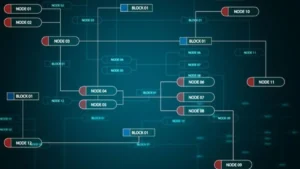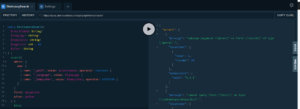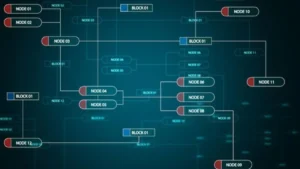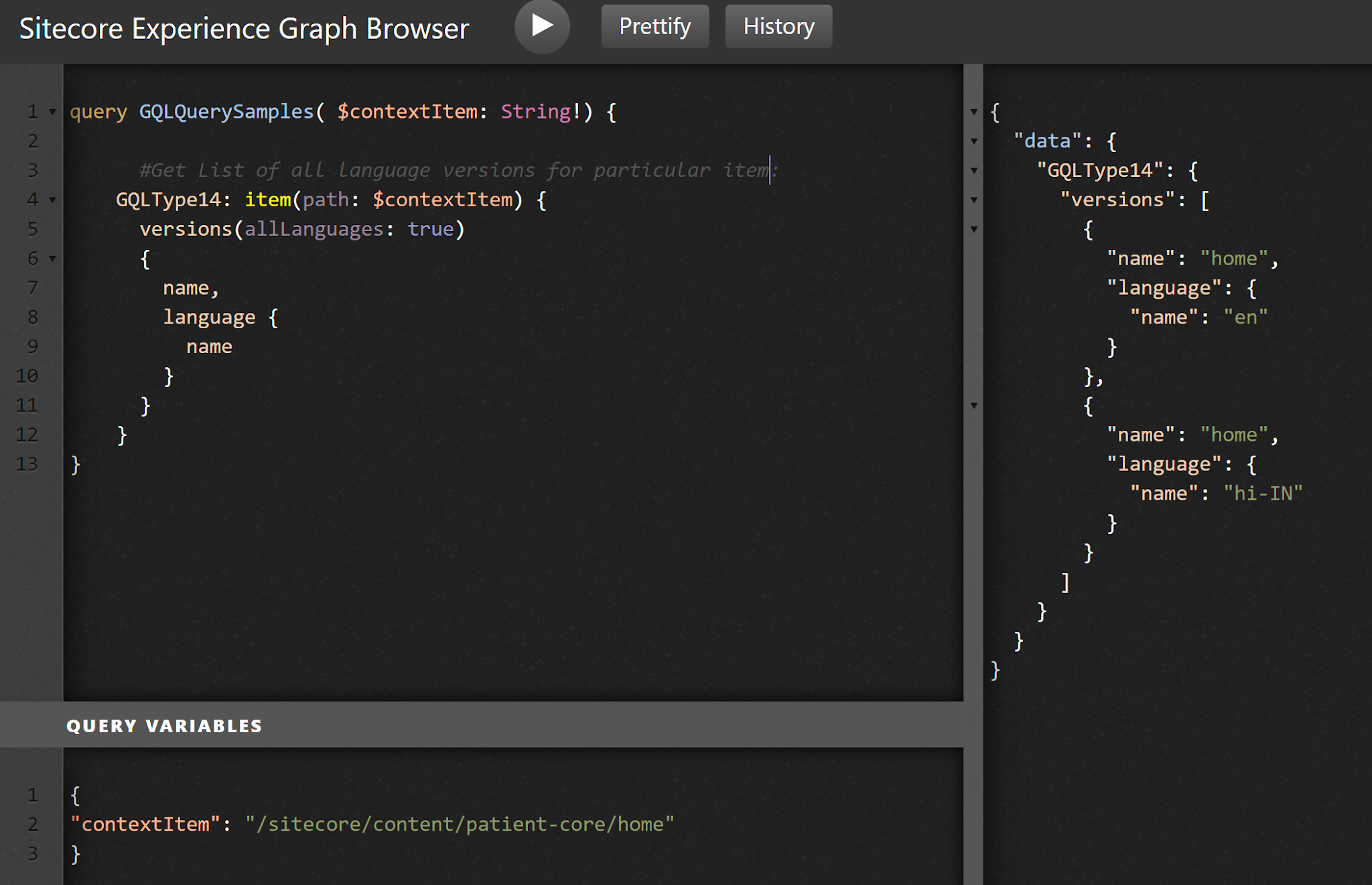The unknown GraphQL query Grapjin can be a tricky problem for many developers. When working with GraphQL, sometimes errors pop up, like “unknown query argument,” which can be confusing and hard to solve. These errors usually happen when there’s a mismatch between the GraphQL schema and the query you’re trying to run.
In this blog post, we will explore the unknown GraphQL query Grapjin and break it down into easy-to-understand steps. Whether you’re a beginner or have some experience with GraphQL, this guide will help you understand why these errors happen and how you can fix them quickly and easily.

1. What is the Unknown GraphQL Query Grapjin Error?
The unknown GraphQL query Grapjin error is a common issue that many developers encounter when working with GraphQL. This error usually happens when there’s a problem with the query you’re trying to run. Sometimes, the query might not match the schema, or there could be a mistake in the way the arguments are set up.
Understanding what causes this error is the first step to fixing it. Many times, this error occurs because the query doesn’t align properly with the schema. The schema is like a blueprint that tells GraphQL what data it can expect and how that data should be structured. If the query doesn’t match this blueprint, GraphQL gets confused and throws an error.
Another common reason for the unknown GraphQL query Grapjin error is when the tools you’re using, like graphql-codegen, generate the wrong types or don’t update the schema correctly. This mismatch can lead to errors that are hard to diagnose if you don’t know what to look for.
2. Why Does the Unknown GraphQL Query Grapjin Happen?
The unknown GraphQL query Grapjin error happens for a few different reasons. One major reason is when there’s a mismatch between the schema and the query. The schema is like a set of rules that GraphQL follows to understand the data. If the query doesn’t follow these rules, an error occurs.
Sometimes, this error can also happen if there are unknown arguments or types in the query that the schema doesn’t recognize. These unknown elements can make it difficult for GraphQL to process the query correctly, leading to the unknown GraphQL query Grapjin error.
Another reason could be a problem with the tools or plugins you’re using to generate the schema and types. If these tools are not properly configured or if the schema is outdated, they might generate incorrect types, which can trigger this error.
3. Understanding GraphQL: What You Need to Know
Before diving into the unknown GraphQL query Grapjin error, it’s important to have a basic understanding of what GraphQL is. GraphQL is a query language for APIs that allows you to request specific data from a server. Unlike REST APIs, where you might get too much or too little data, GraphQL lets you ask for exactly what you need.
GraphQL works by using queries that are written according to a schema. This schema defines the types of data that are available and how they are related to each other. The schema is crucial because it helps GraphQL understand what you’re asking for in your query.
When a query doesn’t match the schema, errors like the unknown GraphQL query Grapjin can occur. This is why understanding the schema is so important. If you know how the schema works, you can write better queries and avoid common errors.
4. How to Spot the Unknown GraphQL Query Grapjin Early
Catching the unknown GraphQL query Grapjin error early can save you a lot of time and frustration. One of the first signs of this error is when your GraphQL query doesn’t return the expected results. If the data you’re trying to fetch isn’t coming through, it’s a good idea to check for errors in the query.
Another way to spot this error early is by using error messages. GraphQL usually provides detailed error messages that can help you pinpoint the problem. These messages might mention something about an “unknown query argument” or a mismatch between the query and the schema.
It’s also helpful to test your queries in a GraphQL playground or a similar tool. These tools can quickly show you if there’s an issue with your query, allowing you to fix it before it causes bigger problems. Being proactive about checking your queries can help you avoid the unknown GraphQL query Grapjin error.
5. Common Causes of Unknown GraphQL Query Grapjin
One of the most common causes of the unknown GraphQL query Grapjin error is a mismatch between the schema and the query. If the query asks for data that the schema doesn’t recognize, GraphQL can’t process the request correctly. This leads to an error that can be tricky to solve if you don’t know what’s causing it.
Another common cause is using outdated tools or plugins. For example, if you’re using graphql-codegen to generate types and schemas, and these are not up-to-date, you might run into this error. It’s important to make sure that all your tools are properly configured and that your schema is current.
Dynamic content structures can also cause the unknown GraphQL query Grapjin error. If your data structure is complex or constantly changing, it might not fit neatly into the schema. This can create ambiguity in the query, leading to errors. Making sure your schema is flexible enough to handle dynamic content can help prevent this issue.

6. How Grapjin Works with GraphQL Queries
Grapjin is a framework built on top of GraphQL that helps manage and optimize API queries. It adds extra features and tools to make working with GraphQL easier, especially when dealing with complex data. However, like any tool, it’s not without its challenges, including the unknown GraphQL query Grapjin error.
Grapjin works by extending the capabilities of GraphQL, offering more flexibility in how queries are handled. It allows for more dynamic schema configurations, which can be both a blessing and a curse. While it makes it easier to manage complex queries, it also introduces the possibility of errors if the schema and queries are not aligned.
Understanding how Grapjin works with GraphQL queries is key to avoiding errors. By knowing how to properly configure and use Grapjin, you can minimize the chances of running into issues like the unknown GraphQL query Grapjin error.
7. Simple Steps to Fix the Unknown GraphQL Query Grapjin
Fixing the unknown GraphQL query Grapjin error might seem complicated, but it can be done with some simple steps. First, check your schema to make sure it’s up-to-date and matches the queries you’re running. If there’s a mismatch, updating the schema or modifying the query might solve the problem.
Next, regenerate your types and schemas using tools like graphql-codegen. This ensures that your schema and types are correctly aligned and reduces the chances of encountering unknown arguments or types in your queries.
Finally, test your queries thoroughly in a GraphQL playground. This can help you identify any remaining issues and fix them before they cause more problems. By following these steps, you can resolve the unknown GraphQL query Grapjin error quickly and efficiently.
8. Tips for Avoiding the Unknown GraphQL Query Grapjin
Avoiding the unknown GraphQL query Grapjin error starts with keeping your schema and queries in sync. Regularly updating your schema and making sure it reflects the data structure accurately can prevent many common errors.
Another tip is to use tools like graphql-codegen to automatically generate types and schemas. These tools help maintain consistency and reduce the risk of errors by ensuring that your queries and schema are always aligned.
It’s also a good idea to implement thorough testing for all your queries. By testing in a controlled environment, you can catch errors early and avoid them in your live application. This proactive approach can save you time and prevent the frustration of dealing with unknown query errors later on.
9. The Role of Schema in Unknown GraphQL Query Grapjin
The schema plays a crucial role in preventing the unknown GraphQL query Grapjin error. The schema is like a set of rules that GraphQL follows to understand what data can be queried and how it should be structured. If the schema doesn’t match the query, GraphQL will throw an error.
A well-defined schema can help you avoid many common errors, including unknown query issues. By clearly defining all possible data types and structures, the schema ensures that queries are processed correctly. It’s important to regularly update and maintain the schema to reflect any changes in the data model.
In cases where the schema and query are not aligned, errors like the unknown GraphQL query Grapjin can occur. This is why it’s essential to validate the schema regularly and make sure it accurately represents the data structure you’re working with.
10. Using graphql-codegen to Solve Unknown Query Issues
Graphql-codegen is a powerful tool that can help solve the unknown GraphQL query Grapjin error by automatically generating types and schemas. This tool ensures that your queries and schema are always in sync, reducing the chances of encountering unknown query errors.
To use graphql-codegen effectively, it’s important to configure it correctly. Make sure it’s set up to generate all the necessary types and schemas based on your data model. Regularly running graphql-codegen can help keep everything up-to-date, preventing mismatches between the schema and queries.
By using graphql-codegen, you can automate much of the process of managing your GraphQL schema, making it easier to avoid errors like the unknown GraphQL query Grapjin. This tool is a valuable addition to any developer’s toolkit, especially when working with complex data structures.
11. How to Align Your Schema and Queries in Grapjin
Aligning your schema and queries is key to avoiding the unknown GraphQL query Grapjin error. The schema defines the structure of the data, while the query asks for specific data based on that structure. If they don’t match, GraphQL can’t process the query correctly.
One way to align your schema and queries is by using tools like graphql-codegen to generate types and schemas. This ensures that your queries are always based on the most recent schema, reducing the chances of errors.
Another important step is to regularly review and update your schema to reflect any changes in your data model. This keeps the schema accurate and ensures that your queries are processed correctly, helping to avoid the it
12. Dynamic Content and Unknown GraphQL Query Grapjin
Dynamic content in GraphQL can sometimes cause the it error. When your data structure changes or varies a lot, it can be tricky to keep the schema and queries in sync. Dynamic content means your data types aren’t fixed and can change depending on different factors.
For example, if your query needs to handle different types of content, like articles, images, or videos, you need to define these types in your schema. Using GraphQL interfaces and unions helps manage dynamic content by allowing you to define flexible structures. This way, the schema can adapt to various content types, reducing the chances of running into the it error.
If you’re working with dynamic content, it’s essential to ensure that your schema is comprehensive and accounts for all possible types and structures. Regular updates and validation of your schema can help prevent errors related to dynamic content.
13. Using GraphQL Interfaces to Handle Unknown GraphQL Query Grapjin
GraphQL interfaces are useful for managing unknown queries in Grapjin. Interfaces allow you to define a set of common fields that multiple types can share. This makes it easier to handle queries that deal with different types of data without causing errors.
When you use interfaces, you create a shared contract for different types, making your schema more flexible. For instance, if you have a Content interface that different types like Article and Image implement, GraphQL can process queries involving these types more reliably.
By using GraphQL interfaces, you reduce the risk of encountering the it error. Interfaces help ensure that your queries align with the schema, even when dealing with various data types.
14. How Unions Can Help with Unknown GraphQL Query Grapjin
Unions are another powerful feature in GraphQL that can help manage the unknown GraphQL query Grapjin error. A union type allows a field to return one of several possible types. This is especially useful for handling dynamic data structures where the exact type of data can vary.
For example, if you have a field that can return either an Article, Image, or Video, you can use a union type to define this. This way, your schema can handle different types of data under the same field, making it easier to manage queries.
Using unions helps avoid the it error by providing a way to deal with various types of data in a flexible manner. It ensures that your queries can adapt to different data structures, reducing the chance of errors.
15. Updating Your Schema to Fix Unknown GraphQL Query Grapjin
Keeping your schema up-to-date is crucial for avoiding the it error. An outdated schema can lead to mismatches between what your queries expect and what the schema actually provides. Regularly updating your schema ensures that it accurately reflects the data model.
To update your schema, you can use tools like graphql-codegen to regenerate the schema based on your latest data models. This helps ensure that any changes in your data structure are accurately represented in the schema.
By maintaining an up-to-date schema, you can prevent many common errors, including the it error. Regular updates and checks are essential for keeping your GraphQL queries working smoothly.
16. Testing Your Queries to Avoid Unknown GraphQL Query Grapjin
Testing your GraphQL queries is a key step in avoiding the it error. By testing your queries before running them in production, you can catch issues early and make sure your queries work as expected.
Using a GraphQL playground or similar tool allows you to run and test your queries in a controlled environment. These tools can show you any errors or issues with your queries, including those related to unknown arguments or types.
Thorough testing helps ensure that your queries align with your schema and reduces the risk of encountering the it error. It’s a proactive approach that can save you time and prevent problems in your live application.
17. Best Practices for Handling Unknown GraphQL Query Grapjin
To handle theit error effectively, follow some best practices. First, make sure your schema is always up-to-date and accurately reflects your data model. Regularly regenerate types and schemas using tools like graphql-codegen.
Second, use interfaces and unions to handle dynamic content and varying data types. These features help create a more flexible schema that can adapt to different types of data, reducing the risk of errors.
Finally, implement thorough testing for all your queries to catch issues early. Testing helps ensure that your queries work correctly and align with your schema, helping to avoid the it error.
By following these best practices, you can manage your GraphQL queries more effectively and minimize the chances of encountering errors.
18. Troubleshooting the Unknown GraphQL Query Grapjin Error
Troubleshooting the it error involves a few key steps. First, check your schema and queries to ensure they are properly aligned. If there’s a mismatch, update your schema or adjust your query to fix the issue.
Second, look at any error messages provided by GraphQL. These messages can offer clues about what’s causing the problem and how to fix it. Pay attention to details like unknown arguments or types that the schema doesn’t recognize.
Finally, use tools like graphql-codegen to regenerate your types and schemas. This can help resolve issues related to outdated or incorrect schema definitions. By following these troubleshooting steps, you can address the unknown GraphQL query Grapjin error and get your queries back on track. 
Conclusion
Handling the unknown GraphQL query Grapjin error can seem tricky, but with the right approach, it gets easier. By keeping your schema updated and making sure it matches your queries, you can avoid most errors. Using tools like graphql-codegen to regenerate types and schemas is a great way to ensure everything stays in sync.
Remember, testing your queries thoroughly and using features like interfaces and unions can help manage dynamic data and avoid issues. Following these tips will make working with Grapjin smoother and keep your GraphQL queries running smoothly.

